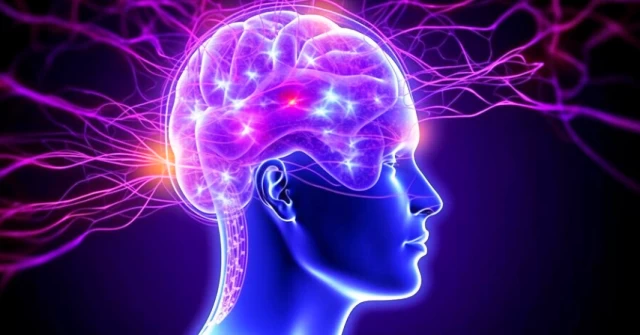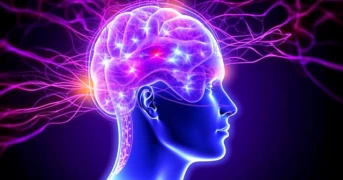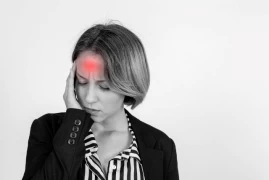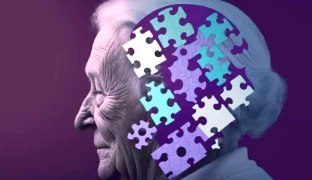
Epilepsy: Diagnosis, Treatment, and Management
- Epilepsy: Diagnosis, Treatment, and Management
- What is Epilepsy?
- What are the Symptoms of Epilepsy?
- How is Epilepsy Diagnosed?
- What are the Treatment Methods for Epilepsy?
- Management and Follow-Up in Epilepsy
- Conclusion
Epilepsy, commonly known as seizure disorder, is a neurological disorder characterized by recurrent seizures. This condition arises due to abnormal electrical activity in the brain and manifests with various symptoms. Epilepsy is a condition that affects individuals' quality of life and requires appropriate diagnosis, treatment, and management strategies.
What is Epilepsy?
Seizures associated with epilepsy can present with symptoms such as loss of consciousness, muscle spasms, sensory changes, or behavioral alterations. Epilepsy can affect any individual regardless of age, gender, or socio-economic status and is typically managed with medications or other treatment modalities.
What are the Symptoms of Epilepsy?
Epilepsy can manifest with various symptoms, typically occurring during seizures. Epileptic seizures can vary from person to person, and symptoms may differ based on the type of seizure, its severity, and which areas of the brain are affected. Here are common symptoms of epilepsy:
- Loss of Consciousness: Individuals may experience loss of consciousness or confusion during a seizure, often observed in tonic-clonic seizures.
- Muscle Spasms and Movements: Sudden and uncontrolled muscle spasms can occur during seizures, typical of tonic-clonic seizures.
- Sensory Changes: Individuals may experience alterations in sensory perception during seizures, such as strange smells, tastes, or visual hallucinations.
- Automatisms: In certain seizure types, individuals may exhibit repetitive behaviors during seizures without being aware of it. For example, hand or mouth movements known as automatisms may be observed.
- Behavioral Changes: Significant changes in behavior may be observed during seizures, including personality changes, sudden intense emotional responses, or aggressive behavior.
- Absence Seizures: During absence seizures, individuals may remain motionless for a few seconds, which may not be noticeable externally. The person typically does not respond to their surroundings or continue speaking.
These symptoms are commonly observed during epileptic seizures but can vary in intensity and presentation among individuals. Some seizures may have more pronounced symptoms, while others may be milder. The patient's symptoms and seizure characteristics provide important clues for diagnosis and treatment.

How is Epilepsy Diagnosed?
The diagnosis of epilepsy is established through clinical evaluation and neurological tests. Initially, the patient's medical history and symptoms are thoroughly examined. Neurophysiological tests such as electroencephalogram (EEG) help identify abnormalities in brain activity. Imaging techniques like magnetic resonance imaging (MRI) are used to detect structural brain abnormalities that may cause epilepsy. Additionally, a comprehensive evaluation conducted by a specialized neurology team is crucial for diagnosing epilepsy.
What are the Treatment Methods for Epilepsy?
Epilepsy treatment requires a personalized approach and typically aims to control seizures. Treatment methods are determined based on the patient's symptoms, seizure type and severity, age, medical history, and other factors. Here are common methods used in epilepsy treatment:
- Antiepileptic Drugs (AEDs): Antiepileptic drugs are the most commonly used treatment to help control epileptic seizures. These drugs reduce or prevent abnormal electrical activity in the brain, thereby reducing the frequency of seizures. AEDs are prescribed by a doctor and should be taken regularly.
- Surgical Treatment: Surgical intervention may be considered for individuals who do not respond to medication or experience side effects. Epilepsy surgery involves the surgical removal or alteration of brain regions known as epileptic foci, helping to control seizures.
- Ketogenic Diet: The ketogenic diet is a dietary approach that involves high fat, low carbohydrate, and moderate protein intake. This diet may help reduce the frequency of seizures in some types of epilepsy, especially in cases where medication is ineffective or surgery is not suitable.
- Deep Brain Stimulation (DBS): DBS is a treatment option that may be considered for epilepsy patients who do not respond to or experience side effects from medications. In this procedure, small electrodes are implanted into the brain, providing electrical stimulation to a specific brain region. This stimulation helps reduce or control epileptic seizures. DBS should be managed by a specialized neurology and neurosurgery team, and the patient's suitability for surgery should be carefully evaluated.
- Vagus Nerve Stimulation (VNS): VNS is another invasive treatment option that may assist in controlling seizures. In this procedure, a device implanted in the neck area delivers regular electrical stimulation to the vagus nerve. This reduces seizure frequency and severity.
Epilepsy treatment should be personalized based on the patient's condition and symptoms. Consulting with a neurology specialist or epilepsy expert is important for developing an appropriate treatment plan. Early initiation of treatment and regular follow-up help control seizures and improve quality of life.
Management and Follow-Up in Epilepsy
Managing epilepsy requires regular follow-up and patient education. It is important for patients to monitor their seizures and medications daily. Additionally, identifying and avoiding triggering factors can help reduce seizure frequency. Patients and their families should be knowledgeable about seizure symptoms and emergency situations. Proper treatment strategies and lifestyle changes play a significant role in managing epilepsy symptoms.
Conclusion
Epilepsy is a neurological disorder that requires a multidisciplinary approach. Appropriate diagnosis, treatment, and management strategies can improve patients' quality of life and seizure control. Since each patient is unique, treatment plans should be personalized and managed by a specialized neurology team.

Spc. Dr. Didem Er
Neurology Specialist





